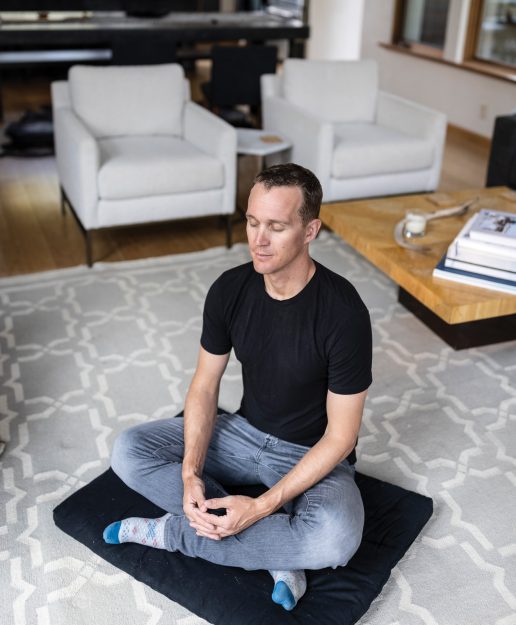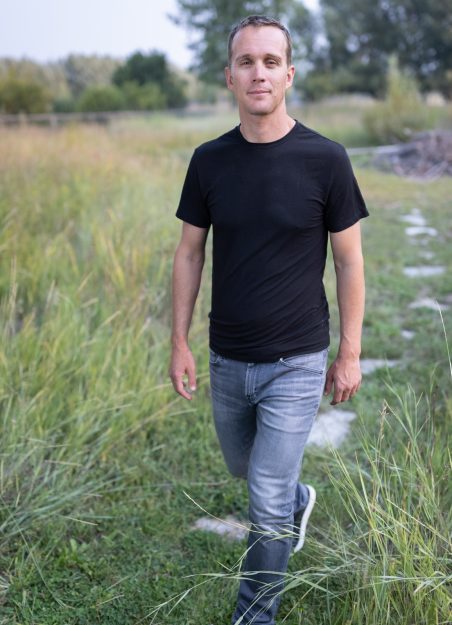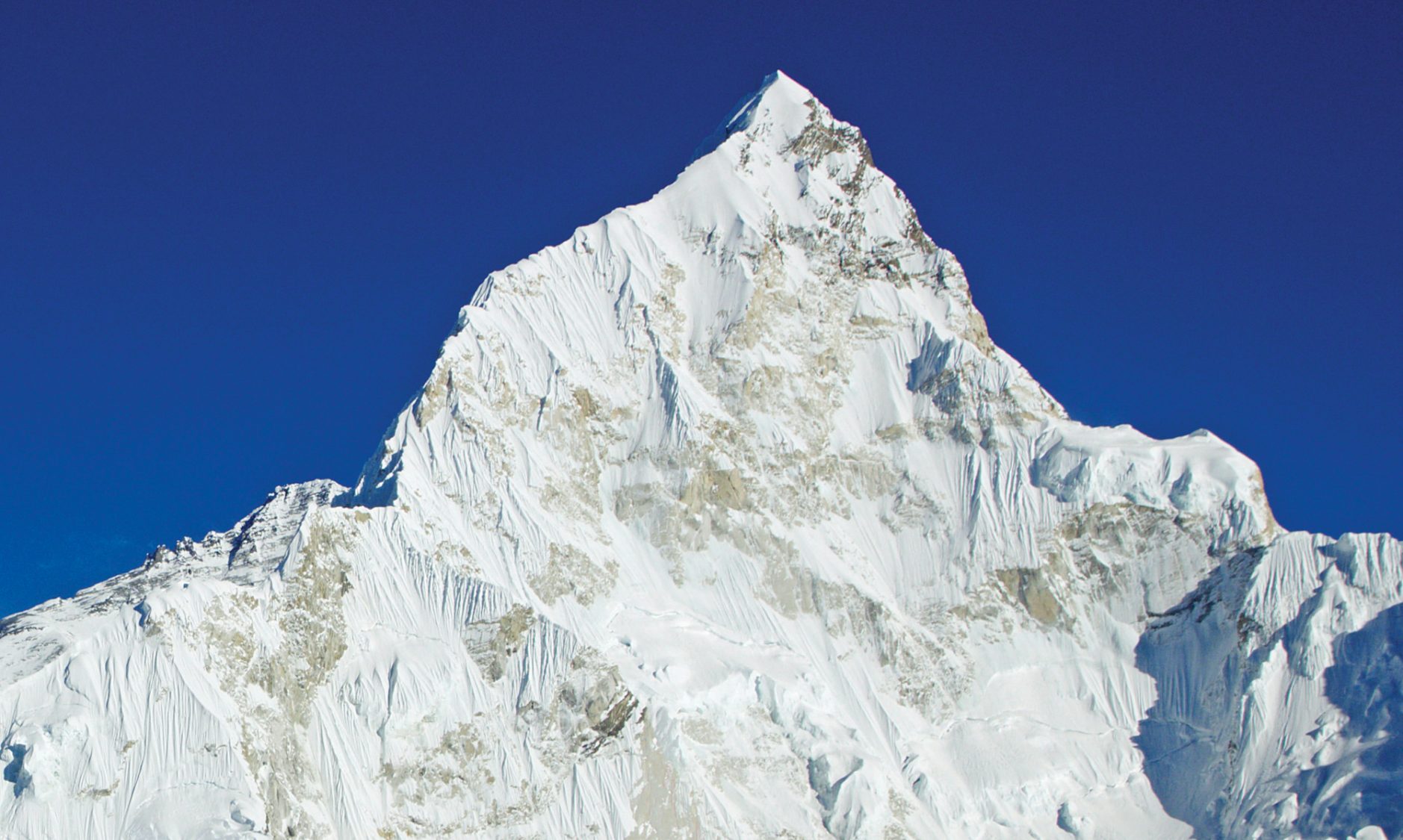During the winter of 2018-19, the American endurance athlete Colin O’Brady completed the first-ever solo, unsupported, unaided crossing of Antarctica. O’Brady traveled 932 miles in 54 days, dragging a 375-pound sled behind him in subzero conditions. A significant amount of physical training had gone into his preparations, as had a surprising amount of sitting still. To get accustomed to the intense isolation and to improve his mental well-being, O’Brady went on a ten-day Vipassana meditation retreat, as he has done every year since 2010.
Before going on his first retreat, O’Brady had been competing as a professional triathlete. His decision to embrace meditation was prompted by a simple question. At the end of a race a friend pulled O’Brady aside and said, “I don’t know much about sports, but I can tell you guys are some of the best athletes in the world, and it’s clearly all in your mind. So what are you doing to train your mind?”
“I was kind of embarrassed,” recalled O’Brady, “like I was caught with my pants down.” He asked for a recommendation, and the friend told him about meditation retreats. As a result, he said, “I went from never meditating to signing up for a ten-day silent Vipassana retreat.”

For athletes of O’Brady’s caliber, sitting still can provide a shocking dissonance. After all, they are used to the intense awareness predicated by dangerous environments. Sasha Dingle, the founder and director of Mountain Mind Project and an internationally competitive freeskier and mountain biker herself, explained that extreme athletes are primed for flow by the inherent risk and novelty of their trade. Assessing the snowpack, being attuned to the weather, and navigating dangerous elements all require embodied presence. Yet despite the allure of complete immersion, it is impossible to remain at the peak permanently. “I see in the mountain community a struggle to transition between that high-valence emotional experience and the blander day-to-day routines of life,” said Dingle. “We can end up chasing this elusive thing that we can’t sustain. You can’t always be charging up mountains.” Outside of the domain in which they achieve high-stakes mastery, high-endurance performers are forced to confront something that can be even more unsettling: the ordinary.
Pete Kirchmer, the program director of mPEAK (Mindful Performance Enhancement, Awareness, and Knowledge), a program for high performers developed in conjunction with the US Olympic BMX Cycling Team coaching staff, a team of UC San Diego neuroscientists, and leaders of the UC San Diego Center for Mindfulness, has seen how difficult the shift from extreme action to radical stillness can be. “I’ve worked with the [Navy] SEALs, and we talk about how jumping out of airplanes and holding one’s breath in freezing water is easier and even preferable for them than sitting with themselves and their emotions in stillness and silence,” said Kirchmer. To attune these gung-ho types to the subtleties of the challenge they are facing, Kirchmer employs a phrase that acts as a training mantra: “Vulnerability is the new hardcore.”
“If jumping out of an airplane doesn’t scare you, then you’re not courageous,” explained Kirchmer. “If you need a new thing to be courageous about, you have to find a new fear to conquer. So let’s work toward these inner fears.”
“In our culture there’s a hardcore, ‘I’m tough’ type of thing,” agreed O’Brady. “You think you’re tough? Sit in silence by yourself for ten days. It’s incredible how challenging that is emotionally and physically, particularly if your body and mind are oriented in a kinetic type of way.” But what exactly is it about sitting still and working with one’s mind that allows extreme athletes to excel kinetically? And what can it teach us run-of-the-mill meditators and weekend warriors about our own inner journeys?
In a 2017 Ted Talk, O’Brady spoke about the mindset required to persevere: “Achievement is not for the select few. Achievement is simply for those who never quit. It is for those who set goals. It is for those who put the most steps in front of the other. Achievement is for those who can overcome the greatest obstacle of all: their mind.”
Having goals is important. People climb to the tops of mountains because of the challenge they provide. It was the pioneering mountaineer George Leigh Mallory (born in 1886 and last seen alive in 1924 roughly 300 meters below the peak of Mount Everest, where his body was discovered in 1995) who responded to the question of why attempt such a preposterous feat with the response “Because it’s there.”
O’Brady noted that for most people, the goal of climbing Mount Everest can obscure the reality. “When people say ‘I want to stand on the top of this mountain,’ they are picturing the dinner party where people say, ‘Whoa, you climbed Mount Everest!’ They are trying to achieve something that isn’t the mountaintop. Their mind is focused not on the present but on the future.”
“Achievement is not for the select few. It is simply for those who never quit. Achievement is for those who can overcome the greatest obstacle of all: the mind.”
O’Brady, who climbed Everest in 2016 as part of his record-setting completion of the Three Poles Challenge (to climb Mount Everest as well as reach the North and South Poles), knows full well the fleeting nature of achievement. “I’ve been patted on the back and have attended the dinner parties, and I know what that feels like. But the true value is the depth of the experience itself. The summit or the mountaintop might be five minutes of a yearlong journey. I don’t ever think of summit day. I think of the process and the journey.”
Kirchmer describes this reorientation to process as setting goals on a shelf. “Rather than training athletes how to release goals, mPEAK teaches them how to relate to goals wisely,” explained Kirchmer. “Every athlete I’ve worked with ultimately comes to understand that the only thing they have agency over is how they respond to the present moment. As soon as they notice they’ve been caught up in over-rehearsing, strategizing, or focusing on a future outcome, they can bring themselves back into the moment by feeling their breath and body and allowing their years of training to come through them uninhibited.”
It can be difficult to keep coming back into the moment as long as lofty goals loom in the distance. Kirchmer calls this getting caught in the “performance story.” It is a trap that meditators know all too well. After all, a similar drive to achieve can start one on the path of contemplative practice. Were meditation merely an exercise in stillness, then the insight of the greatest couch potato might rival the insight of the greatest Buddhist master. But meditation is a process. We begin to practice meditation because we have a goal in mind that exists on some fabled internal peak. We want to be wiser, more compassionate, less anxious, or perhaps enlightened. Whatever our gateway to practice may be, we usually arrive there with a specific desire.
One of the insights of Buddhist practice is that such desires are the very source of suffering. The trick, then, is to practice letting go of desire, since it is this very grasping mechanism that causes suffering in the first place. Professor of religious studies Dale Wright wrote in his book Buddhism: What Everyone Needs to Know (2020), “If you eliminate or ameliorate the conditions that give rise to suffering, you will have eliminated or diminished that suffering.” Meditation can be a tool for bringing intentional presence to each moment and learning to let go of the Everests and Antarcticas of the mental landscape. “The deepest states of meditation are described as these experiences of ‘release’ and ‘letting go,’” wrote Wright. This doesn’t mean that one simply stops striving. Rather, one sees that fulfillment arises from mindful attunement to the process rather than in the achievement of specific outcomes.
This can be an especially hard lesson to grasp when specific outcomes pay the bills. For athletes competing to be the first or the fastest, their livelihood can depend on these exploits and the publicity and opportunities they bring. No one remembers the second person to climb Everest.
It is a tension that O’Brady is intimate with. “I’m continually working on and pondering it,” he admitted. When given the opportunity to ask a question at his first Vipassana retreat, O’Brady inquired about this tension between goals and process.
“I’m a very goal-oriented person, and I’m there to become a better professional athlete,” related O’Brady. “I’m hearing that all this meditation is about letting go of craving and letting go of aversion, with no relationship in my mind about how these sync up. Am I supposed to let go of my goals and dreams while I sit here? Every time I’ve gone back, I’ve asked the same question. And what I’ve been told, essentially, is that you have the answer.”
The answer, O’Brady found, involved being present for“the doing of the thing itself” and not the aftermath. “This is why we call it a practice,” said O’Brady. “I have achieved goals that are very ambitious by setting them and having a clear, linear purpose and direction, but then saying, ‘Forget about this. We’re on the path now.’
“When alone in Antarctica you think, ‘No one can ever walk that far.’ But I can be present for one hundred steps, or get to the next rock, or the next shadow, just as we do on the meditation cushion.” It was a feat that O’Brady accomplished step by single step—a journey that he now thinks of as “a 54-day silent walking meditation in Antarctica.”

On January 21, 2021, O’Brady put up an Instagram photo of himself meditating in Pakistan at the base camp of K2. Along with several others, he was hoping to achieve the first-ever winter ascent of the mountain (on January 16, 2021, a team of Nepali climbers completed the feat). While he waited for a clear weather window, O’Brady wrote under the Instagram photo, “It’s easy to get anxious in these moments of waiting and anticipation. But expending any extra energy right now is a waste. Instead, I turn to my meditation practice and the daily intention of finding calm, gratitude for my surroundings, and patience.”
In early February clear weather arrived and O’Brady made a push for the summit. On the way to Camp 2 at 22,000 feet, his climbing partner made the difficult decision to call off his summit push. O’Brady kept on, making it to Camp 3 on February 4. Then things quickly deteriorated. A miscommunication led to an abundance of climbers and a dearth of tents and other equipment, a potentially fatal situation.
“When sitting, you learn not to react but to listen and feel. That is the essence of Vipassana, and I think that trained me to be able to sit in stillness for a crucial period of time that possibly saved my life.”
“At 24,000 feet, in minus 50 degrees, when the circumstances were seven people in a three-person tent, the situation was devolving into a really bad one,” recalled O’Brady. In those dire circumstances, he had to figure out whether or not to keep going.
“My ego and achievement-oriented self wanted to do the climb. I had put so much energy and time into it and had so many people following it, and I felt that external pressure. But my practice allowed me to meditate in this crazy environment. I tried to take away the external circumstances and take a deeper look inside to make a critical decision. Without daily meditation practice I wouldn’t have been equipped with the tool to sit in stillness in this harsh environment, to close my eyes and breathe. I wouldn’t have had the awareness to listen to what was coming up for me internally, which ended up, to my surprise and especially to the surprise of my ego, being the decision that this was the moment to not go.”
O’Brady was able to descend safely. But tragically, over the next 24 hours four other climbers lost their lives. O’Brady didn’t reach the top of the mountain, but letting go of the goal was something he’d trained for. It required being vulnerable and open. It required stillness. “When sitting, the knees hurt and the back hurts and it’s hot and you have sweat coming down your cheek, and you learn not to react but to listen and feel. That is the essence of Vipassana, and I think that indirectly or directly trained me to be smashed in a tent with seven people and still be able to sit in stillness and listen for a crucial period of time that possibly saved my life.”
As far as I know, when asked why one sits on a meditation cushion, no one has ever responded, “Because it’s there.” But perhaps this would be the most appropriate answer. After all, sitting for the purpose of achieving a specific goal is a surefire way to create an obstacle, a gap between desire and achievement, a rift between the valley and the peak. Yet through meditation practice we can come to appreciate what Sasha Dingle of Mountain Mind Project describes as “the full spectrum of human experience.” This is how we bridge the gap. “I can still tap into these present-moment, awe-inducing experiences when I’m just doing work, or hanging out with other people,” explains Dingle. The ordinary can be quite extraordinary if we pay attention.
Perhaps this is why extreme sports can be such a compelling metaphor for practice. It’s not about the five minutes spent on the roof of the world on summit day but about all the moments of exertion and exuberance that are part of the process. When this becomes evident, the desire to get to the summit takes a back seat to the joyful grind and tender vulnerability of the present. “The path to liberation isn’t for the faint of heart; it requires the heart of a warrior,” said Kirchmer. “Athletes can be a powerful archetype for the kind of fierce energy required for daily commitment to practice.”
The application of this fierce energy can certainly be rewarding. Meditation has given O’Brady the mental edge he was seeking all those years ago when he first dove into the deep end of a ten-day silent retreat. Yet for all he has achieved, O’Brady doesn’t consider this edge the main draw of mindfulness: “That’s what brought me into practice, but it’s not at all near the top of the list of benefits from practice. It taught me to let go of my attachment to being a better athlete and to be more connected to family and life. I’m happy to know that more people are awakening to that reality, because it will lead not only to more incredible human performance and achievement but also to a more peaceful and interconnected community and world.”
Thank you for subscribing to Tricycle! As a nonprofit, we depend on readers like you to keep Buddhist teachings and practices widely available.
